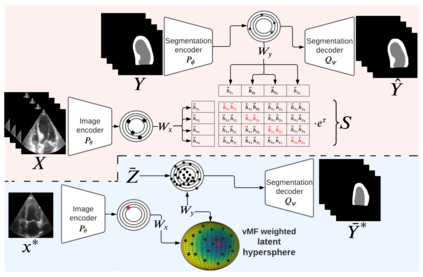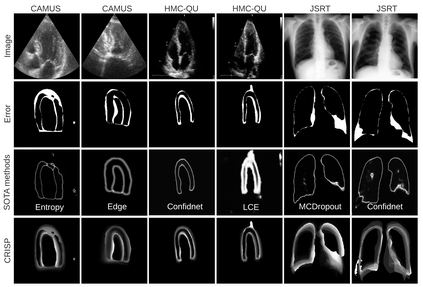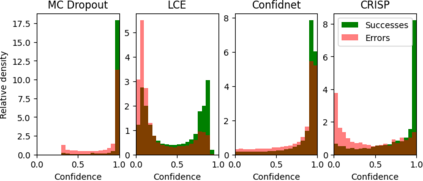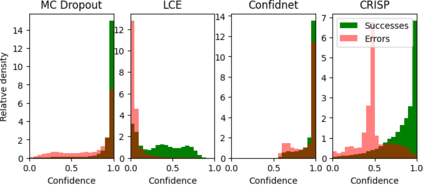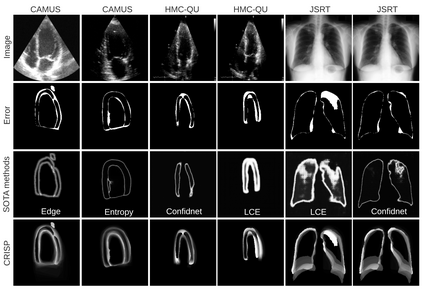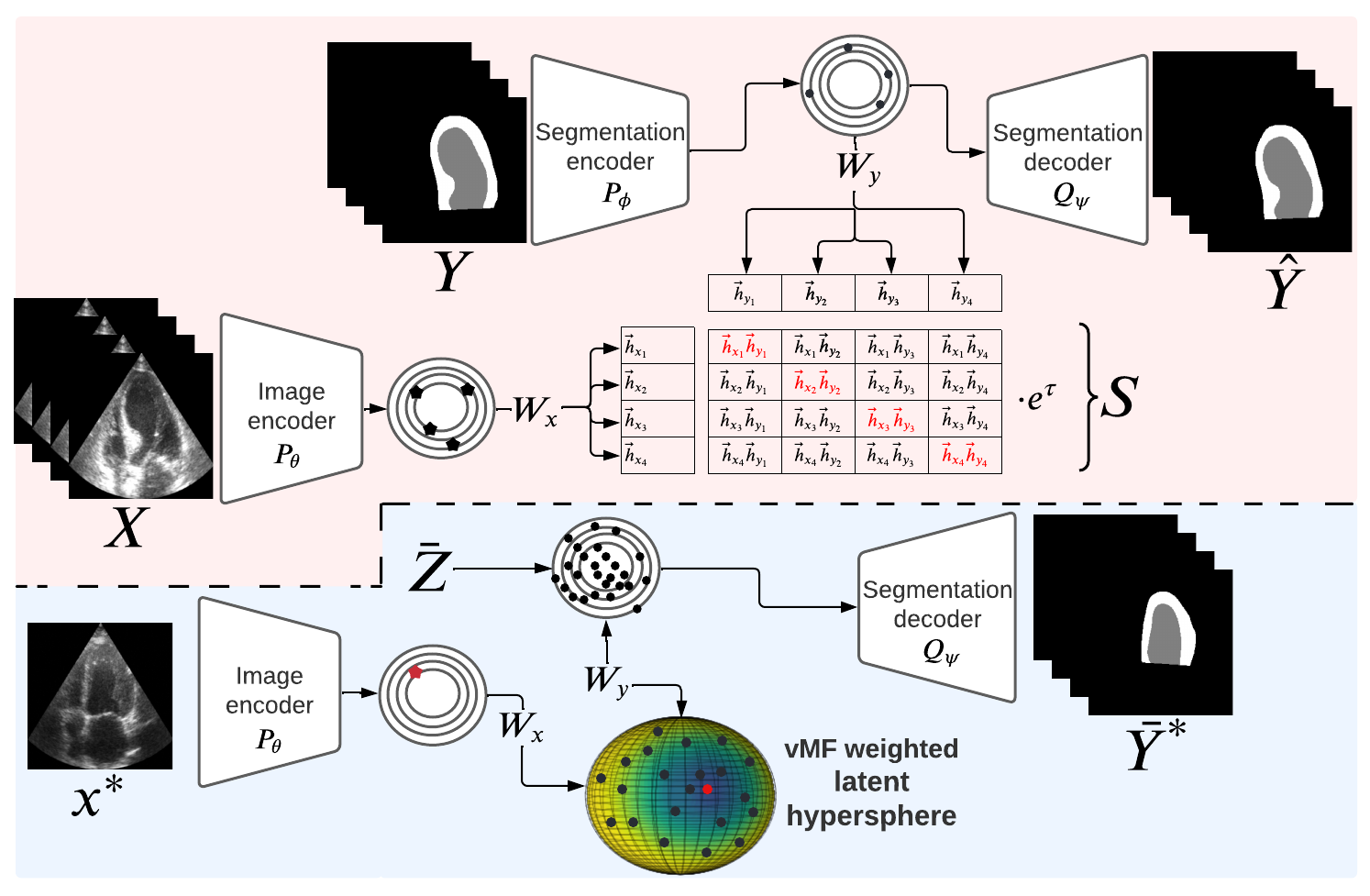Accurate uncertainty estimation is a critical need for the medical imaging community. A variety of methods have been proposed, all direct extensions of classification uncertainty estimations techniques. The independent pixel-wise uncertainty estimates, often based on the probabilistic interpretation of neural networks, do not take into account anatomical prior knowledge and consequently provide sub-optimal results to many segmentation tasks. For this reason, we propose CRISP a ContRastive Image Segmentation for uncertainty Prediction method. At its core, CRISP implements a contrastive method to learn a joint latent space which encodes a distribution of valid segmentations and their corresponding images. We use this joint latent space to compare predictions to thousands of latent vectors and provide anatomically consistent uncertainty maps. Comprehensive studies performed on four medical image databases involving different modalities and organs underlines the superiority of our method compared to state-of-the-art approaches.
翻译:准确的不确定性估算是医学成像界的一项关键需要。提出了各种方法,所有分类不确定性估算方法都直接扩展。独立像素的不确定性估算往往基于对神经网络的概率性解释,没有考虑到先前的解剖学知识,因此没有为许多分解任务提供亚最佳结果。为此,我们建议CRISPS为不确定性预测方法提供一种竞争性图像分割法。CRIPS在其核心中采用了一种对比性方法,学习一种共同的潜在空间,用于编码有效分解的分布及其相应图像。我们利用这一联合潜在空间将预测与数千个潜在矢量进行比较,并提供在解剖学上一致的不确定性图示。对涉及不同模式和器官的四个医学图像数据库进行的全面研究强调了我们方法相对于最新方法的优越性。

